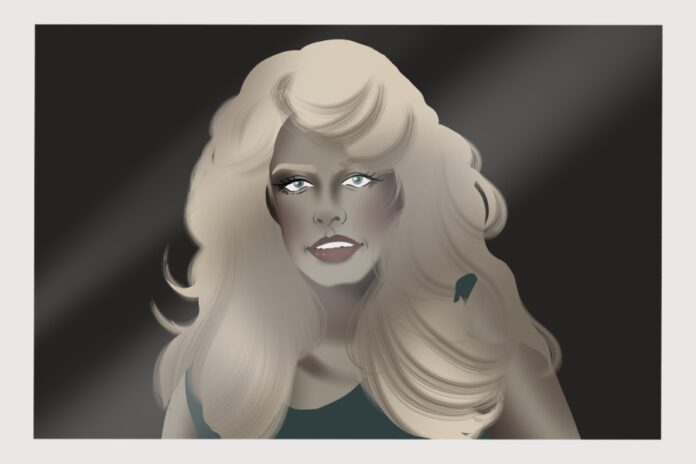Does the sex icon title exist in contemporary Hollywood?
I first learned who Farrah Fawcett was when I was in the fifth grade. My mom took me to a cafe that used classic photographs as the number cards placed on each table to have orders delivered. Our card had the famous “Charlie’s Angels” photo with Fawcett centered in the middle. She’s objectively physically stunning and, of course, her hair is what drew my attention.
“That’s Farrah Fawcett,” my mom said. “She was a sex icon from the ’70s. I still remember watching that show back then.”
The idea of sexuality was not avoided in my childhood; my mom did not want me to think this integral part of our existence was something embarrassing or that it should be hidden. While my mom included a healthy feminist contextualization to the situation, I was introduced to the concept that some people are deemed famous predominantly due to their physical sex appeal.
Think of others like Pamela Anderson, Elizabeth Taylor, Megan Fox and, of course, Marilyn Monroe. Even the recently deceased Doris Day, under her innocent virginal appeal, was a cloaked sex icon. Each embodied the total collection of beauty standards of the time, deemed the apple of the generation’s eye.
It’s important to note that these beauty standards do not include women of color or any sexuality besides the heterosexual norm. Of course it’s wrong, but not terribly surprising given the time. These ideas of beauty standards and which groups occupy them, while vitally important to recognize, are not revolutionary. Beauty standards are and have always been strict, and the fame associated with immense physical beauty of a select few women set these standards. I’m curious, however, how much these standards have held themselves together in present-day Hollywood? Are we still in the era of the sex icon?
My initial answer to this question is no. Although tabloid magazines might still publish their “Sexiest Man/Woman of the Year” cover spread, I cannot pinpoint a single person our decade has deemed “the sex icon” of the era. Progressive ideology and the emphasis on representation in the media has made its way onto the mainstage and established new standards in how we view the actors we see in the limelight. It’s not that we don’t view certain celebrities as sexy or attempt to replicate their appearances (think Kardashians). But the same awe communally associated with one person, I believe, has been foregone. Our society would instantly reject the occurrence of such a universal notion — and what a good thing that is.
Omitting the title of sex icon from our everyday vernacular when speaking of celebrities is a significant indicator of our collective values. We expect more than attractiveness in our standards of fame. Although the Kardashians may still fiscally benefit, their vanity and vapidness is often the butt of the joke. There has been a clear moral shift.
I am concerned, though, when people look at the surface to assess progress. Take for example “Crazy Rich Asians,” which was praised for its all-Asian cast. Yet, under deeper analysis, the film ultimately belittles traditional cultures and favors their Western representations.
Similarly, just because we have rid Hollywood of the sex icon title and included more representations of beauty on screen does not mean we genuinely rid such a mindset from our psyche — Lady Gaga has still been told to get a nose job and Meryl Streep was once told she was too ugly for a role. Who we put on screen is still under intense scrutiny by the Hollywood machine. While some can slip through the cracks, high beauty standards are simultaneously alive and well. Although we may not have the title of sex icon out in the open, this does not mean the same scrutiny associated with it is gone.
I must also note my fear in completely ridding the notion of sexuality and sex appeal from mainstream Hollywood. Similar to my mom introducing me to the idea of sexuality at a young age, I fear consequences from limitations on the space for female sexaulity. The representation and purpose of this sexuality, of course, must be reevaluated — not for the male gaze.
The appeal of the woman should not be evaluated in a surface-level vacuum, but the images of Farrah Fawcett smoothly skating on a cruiser and Pamela Anderson in a high-cut red swimsuit should not be destroyed either. Who is allowed to pose in these photos must be opened up to more definitions of beauty. They can serve as a vital mechanism in expressing womanhood, if the woman chooses to express herself in such a way. The fundamental essence of the sex icon must live beyond the title, and sexuality can be used as a tool for female empowerment.
Written by: Caroline Rutten — arts@theaggie.org




